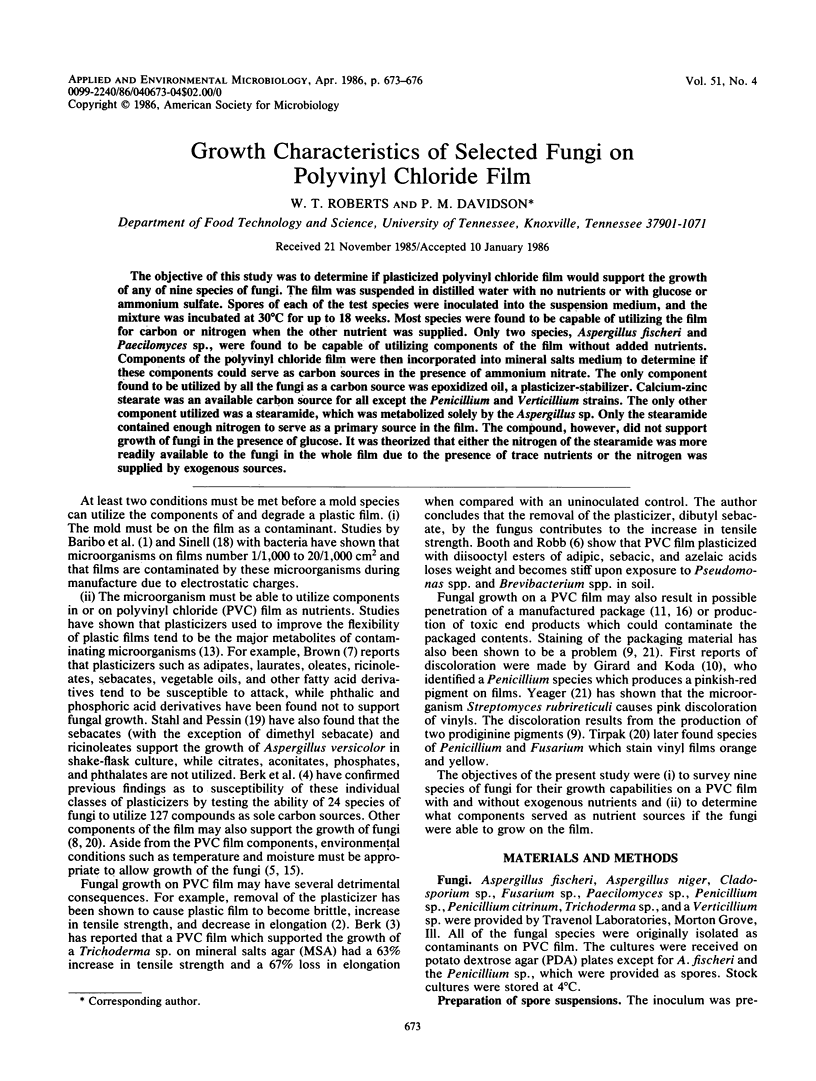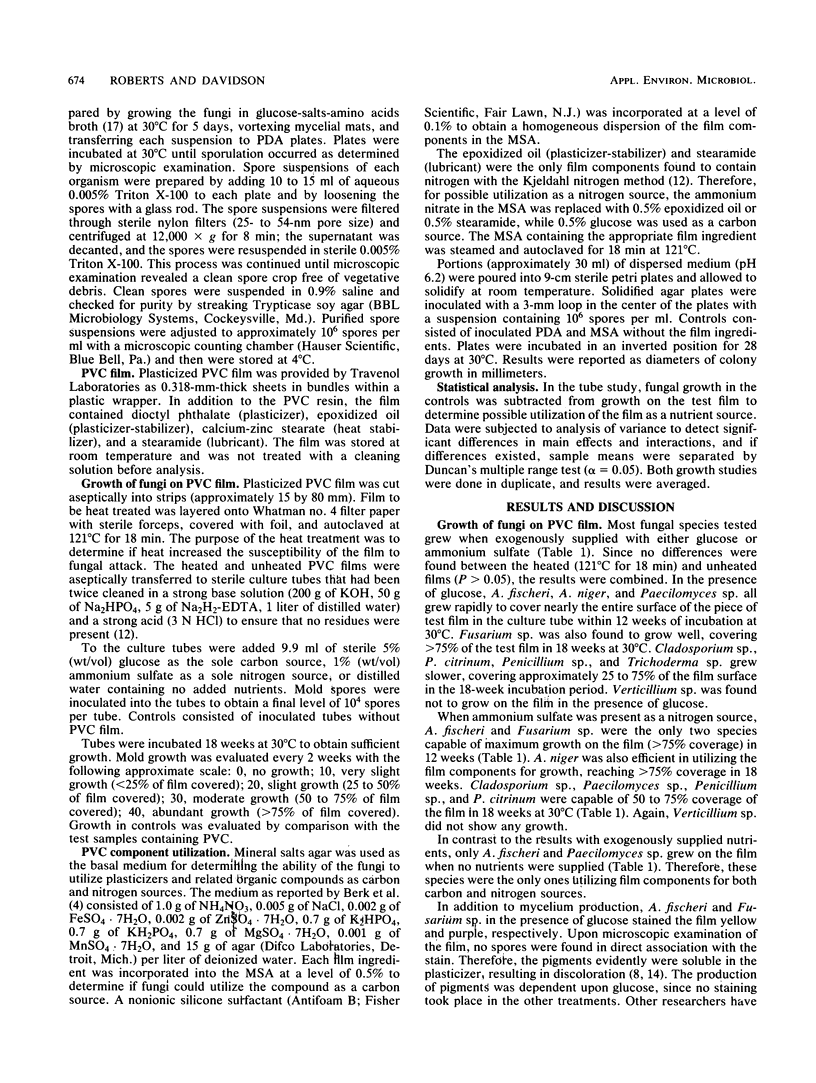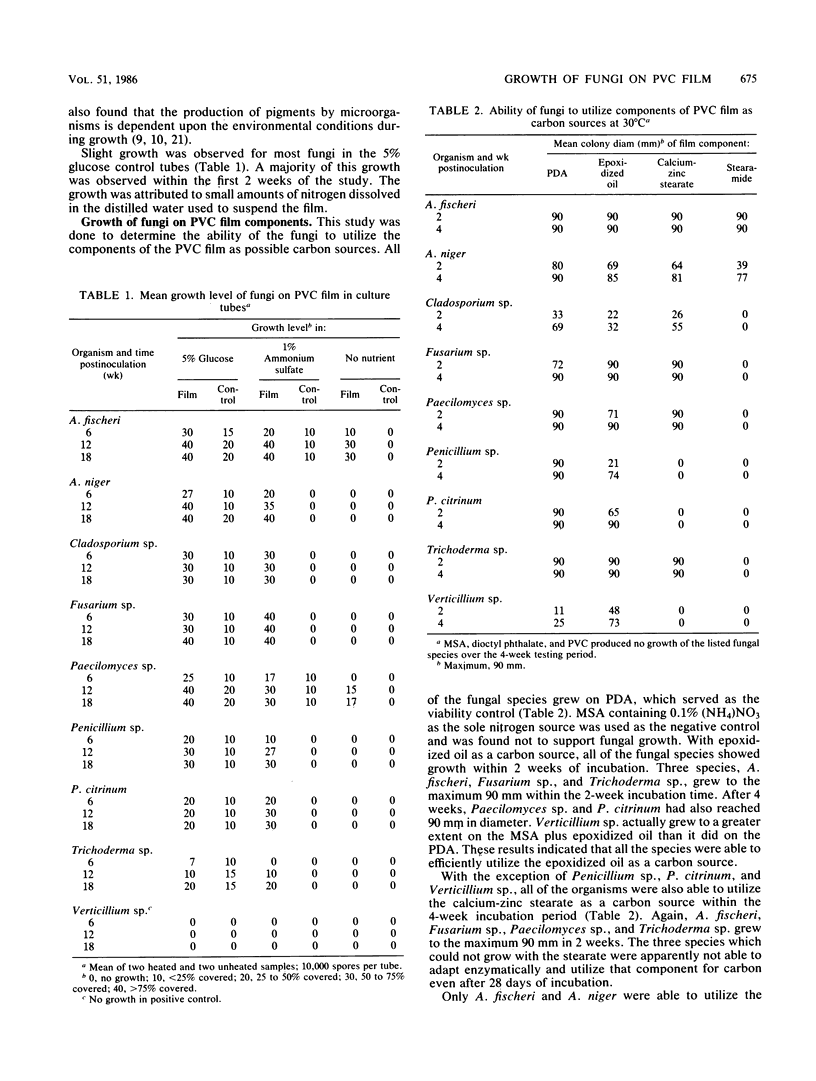Abstract
The objective of this study was to determine if plasticized polyvinyl chloride film would support the growth of any of nine species of fungi. The film was suspended in distilled water with no nutrients or with glucose or ammonium sulfate. Spores of each of the test species were inoculated into the suspension medium, and the mixture was incubated at 30 degrees C for up to 18 weeks. Most species were found to be capable of utilizing the film for carbon or nitrogen when the other nutrient was supplied. Only two species, Aspergillus fischeri and Paecilomyces sp., were found to be capable of utilizing components of the film without added nutrients. Components of the polyvinyl chloride film were then incorporated into mineral salts medium to determine if these components could serve as carbon sources in the presence of ammonium nitrate. The only component found to be utilized by all the fungi as a carbon source was epoxidized oil, a plasticizer-stabilizer. Calcium-zinc stearate was an available carbon source for all except the Penicillium and Verticillium strains. The only other component utilized was a stearamide, which was metabolized solely by the Aspergillus sp. Only the stearamide contained enough nitrogen to serve as a primary source in the film. The compound, however, did not support growth of fungi in the presence of glucose. It was theorized that either the nitrogen of the stearamide was more readily available to the fungi in the whole film due to the presence of trace nutrients or the nitrogen was supplied by exogenous sources.
Full text
PDF



Selected References
These references are in PubMed. This may not be the complete list of references from this article.
- BLOCK S. S. Humidity requirements for mold growth. Appl Microbiol. 1953 Nov;1(6):287–293. doi: 10.1128/am.1.6.287-293.1953. [DOI] [PMC free article] [PubMed] [Google Scholar]
- Baribo L. E., Avens J. S., O'neill R. D. Effect of electrostatic charge on the contamination of plastic food containers by airborne bacterial spores. Appl Microbiol. 1966 Nov;14(6):905–913. doi: 10.1128/am.14.6.905-913.1966. [DOI] [PMC free article] [PubMed] [Google Scholar]
- Gerber N. N., Stahly D. P. Prodiginine (prodigiosin-like) pigments from Streptoverticillium rubrireticuli, an organism that causes pink staining of polyvinyl chloride. Appl Microbiol. 1975 Nov;30(5):807–810. doi: 10.1128/am.30.5.807-810.1975. [DOI] [PMC free article] [PubMed] [Google Scholar]
- STAHL W. H., PESSEN H. The microbiological degradation of plasticizers. I. Growth on esters and alcohols. Appl Microbiol. 1953 Jan;1(1):30–35. doi: 10.1128/am.1.1.30-35.1953. [DOI] [PMC free article] [PubMed] [Google Scholar]


